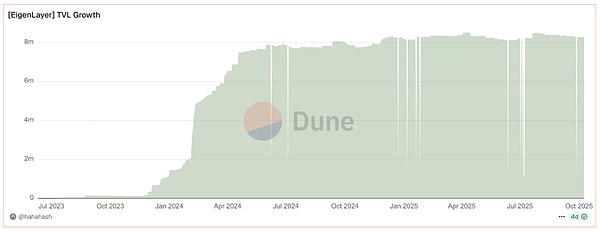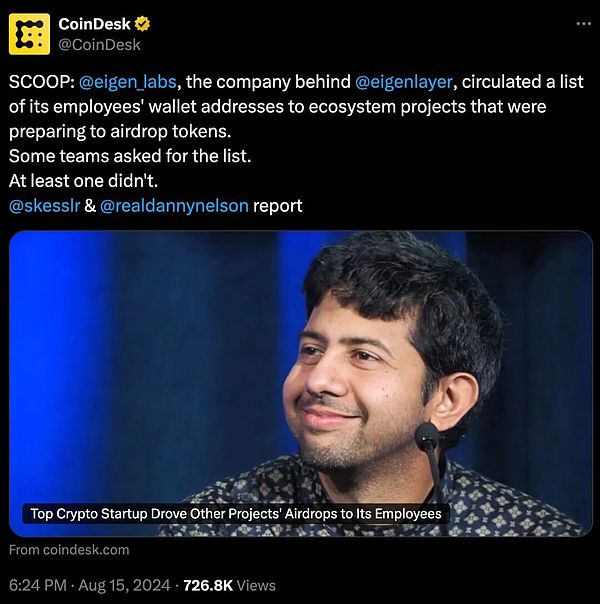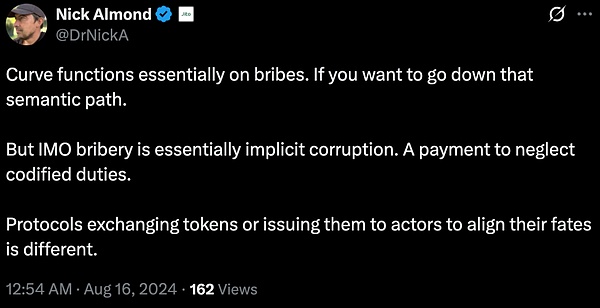Author: Thejaswini M A
Translation: Block unicorn
Preface
The interviewer from Caltech leaned forward and posed an intriguing question.
"Suppose I give you unlimited resources, unlimited talent, and 30 years. You lock yourself in a lab like a hermit. After 30 years, you come out and tell me what you invented. What would you create?"
At the time, Kannan, a postdoctoral researcher applying for a faculty position, was pursuing his undergraduate degree at the Guindy Engineering College and was involved in the development of ANUSAT, India's first student-designed microsatellite. This project sparked his interest in complex systems and coordination problems.
In 2008, he arrived in the United States with just $40 in funding. He studied telecommunications engineering at the Indian Institute of Science in Bangalore and later earned a master's degree in mathematics and a Ph.D. in electrical and computer engineering from the University of Illinois at Urbana-Champaign.
His doctoral research focused on network information theory, specifically how information flows through node networks. He spent six years solving long-standing problems in the field. When he finally cracked these issues, only twenty people in his subfield took notice. No one else cared.
Disappointment led to reflection. He had been pursuing the beauty of curiosity and intellect rather than impact. If you don't deliberately pursue it, you can't expect real-world change to randomly emerge as a byproduct.
He drew a two-dimensional graph. The X-axis represented technical depth, and the Y-axis represented impact. His work firmly landed in the quadrant of high depth and low impact. It was time to move on.
In 2012, after joining the University of Washington as an assistant professor, Kannan devised his first 30-year project: decoding how information is stored in living systems. He gathered collaborators and made progress. Everything seemed to be on track.
Then in 2017, his Ph.D. advisor called to discuss Bitcoin. It had throughput and latency issues—exactly what Kannan had researched during his Ph.D.
His first reaction? Why would he abandon genomics for "random guesswork"?
The technical fit was obvious, but it seemed far removed from his grand vision. Then he reread Yuval Noah Harari's "Sapiens." One point struck him: what makes humans special is not our innovation or intelligence, but our ability to coordinate on a large scale.
Coordination requires trust. The internet connects billions of people but leaves a gap. It enables instant communication across continents but does not provide any mechanism to ensure that people will keep their promises. Emails can convey commitments in milliseconds, but fulfilling those commitments still requires lawyers, contracts, and centralized institutions.
Blockchain fills this gap. They are not just databases or digital currencies; they are execution engines that turn commitments into code. For the first time, strangers can enter into binding agreements without relying on banks, governments, or platforms. The code itself holds people accountable.
This became Kannan's new 30-year goal: to build a coordination engine for humanity.
But here, Kannan learned something that many scholars often overlook. Having a 30-year vision does not mean you can jump directly to 30 years. You must gain leverage to tackle bigger problems.
The energy required to move the Earth is a million times more than that needed to move a buffalo. If you want to eventually move the Earth, you can't just declare that goal and expect to gain resources. According to Kannan, you must first move a buffalo. Then perhaps a car. Then a building. Then a city. Each success gives you greater chips to tackle the next challenge.
The world is designed this way for a reason. Giving someone who has never moved a buffalo the power to move the Earth could lead to catastrophic failure. Incremental leverage can prevent disastrous failures.
Kannan's first attempt to move a buffalo was a project called Trifecta. It was a high-throughput blockchain that he built with two other professors. They proposed a blockchain solution capable of 100,000 transactions per second. But no one funded it.
Why? Because no one needed it. The team optimized the technology but failed to understand market incentives or identify clear customers. They hired like-minded individuals—all PhDs focused on solving theoretical problems.
Trifecta failed. Kannan returned to academia and research.
Then he tried again, creating an NFT marketplace called Arctics. He had been an advisor to Dapper Labs (which operates NBA Top Shot). The NFT space seemed promising. But while building the marketplace, he continually encountered infrastructure issues. How to obtain reliable price oracles for NFTs? How to bridge NFTs across different chains? How to run different execution environments?
This marketplace also failed. He did not understand the mindset of NFT traders. If you are not your own customer, you cannot build a meaningful product.
Every problem required the same thing: a trust network.
Should he build an oracle? A bridge? Or should he build the meta-thing that solves all these problems—the trust network itself?
He realized this. He was the kind of person who would build an oracle or a bridge. He could be his own customer.
In July 2021, Kannan founded Eigen Labs. The name comes from the German word "eigen," meaning anyone can build what they want. Its core idea is to achieve open innovation through shared security.
Technological innovation is "re-staking." Ethereum validators lock ETH to secure the network. What if they could simultaneously use those assets to secure other protocols? New blockchains or services do not need to build their own security mechanisms from scratch but can borrow from Ethereum's established pool of validators.
Kannan pitched this idea to a16z five times before securing funding. One early pitch was memorable for the wrong reasons. Kannan wanted to build on Cardano because it had an $80 billion market cap but no available smart contracts. a16z's partners took the call outside a Solana conference. Their reaction was: this is interesting. Why did you choose Cardano?
The feedback forced Kannan to think about focus. Startups are exponential games. You want to turn linear work into exponential impact. If you think you have three exponential ideas, you probably have none. You need to choose the one with the highest exponent and go all in.
He refocused on Ethereum. This decision proved correct. By 2023, EigenLayer had raised over $100 million from companies including Andreessen Horowitz. The protocol was launched in phases, peaking with a total locked value of $20 billion.
Developers began building "Active Validation Services" (AVS) on EigenLayer, from data availability layers to AI reasoning networks, each leveraging Ethereum's security pool without having to build validators from scratch.

However, success also brought scrutiny. In April 2024, EigenLayer announced its EIGEN token distribution, which sparked a strong backlash.
The airdrop locked tokens for months, preventing recipients from selling. Geographic restrictions excluded users from jurisdictions like the U.S., Canada, and China. Many early participants (who had deposited billions) felt that the distribution favored insiders over community members.
This reaction caught Kannan off guard. The total locked value of the protocol plummeted by $351 million as users withdrew in protest. This controversy exposed the gap between Kannan's academic thinking and the expectations of the crypto world.
Then came the conflict of interest scandal. In August 2024, CoinDesk reported that Eigen Labs employees received nearly $5 million in airdrops from projects based on EigenLayer. Employees collectively claimed hundreds of thousands of tokens from projects like EtherFi, Renzo, and Altlayer. At least one project, under pressure, included employees in its distribution.

This revelation led to accusations that EigenLayer was undermining its "trustworthy neutrality" stance by rewarding employees with tokens from influential projects.

Eigen Labs responded by prohibiting ecosystem projects from airdropping tokens to employees and implementing lock-up periods. But its reputation was damaged.
Despite these controversies, EigenLayer remains at the core of Ethereum's evolution. The protocol has established partnerships with major players like Google Cloud and Coinbase, which serve as node operators.
Kannan's vision extends far beyond re-staking. "Crypto is our superhighway for coordination," he says. "Blockchains are engines of commitment. They enable you to make and keep promises."
He thinks in terms of quantity, diversity, and verifiability. How many promises can humans make and keep? How diverse can those promises be? How easily can we verify them?
"This is a crazy, century-long project," Kannan says. "It will upgrade the human species."
The protocol launched EigenDA, a data availability system designed to handle the total throughput of all blockchains. The team introduced a subjectivity governance mechanism to resolve disputes that cannot be verified solely on-chain.
But Kannan admits the work is far from complete. "Unless you can run education and healthcare on-chain, the work isn't done. We are far from finished."
His building approach combines top-down vision with bottom-up execution. You need to know where the mountain of goals is. But you also need to find the slope that leads there from where you stand today.
"If you can't do anything with your long-term vision today, then it’s useless," he explains.
Verifiable cloud is the next frontier for EigenLayer. Traditional cloud services require trust in Amazon, Google, or Microsoft. Kannan's version allows anyone to run cloud services—storage, computation, AI reasoning—and prove through cryptography that they are executed correctly. Validators stake on their honesty. Malicious actors will lose their stake.
In his 40s, Kannan maintains an adjunct professor position at the University of Washington while operating Eigen Labs. He continues to publish research and thinks from the perspective of information theory and distributed systems.
But he is no longer the scholar who couldn't answer Caltech's 30-year question. He has now answered it three times—genomics, blockchain, coordination engine. Each answer builds on the lessons learned from the previous attempts.
The buffalo has been moved. The car has started. Buildings are beginning to move. Whether he can ultimately move the Earth remains to be seen. But Kannan has learned something that many scholars never grasp: the path to solving big problems begins with solving small ones and accumulating chips to tackle larger challenges.
免责声明:本文章仅代表作者个人观点,不代表本平台的立场和观点。本文章仅供信息分享,不构成对任何人的任何投资建议。用户与作者之间的任何争议,与本平台无关。如网页中刊载的文章或图片涉及侵权,请提供相关的权利证明和身份证明发送邮件到support@aicoin.com,本平台相关工作人员将会进行核查。




